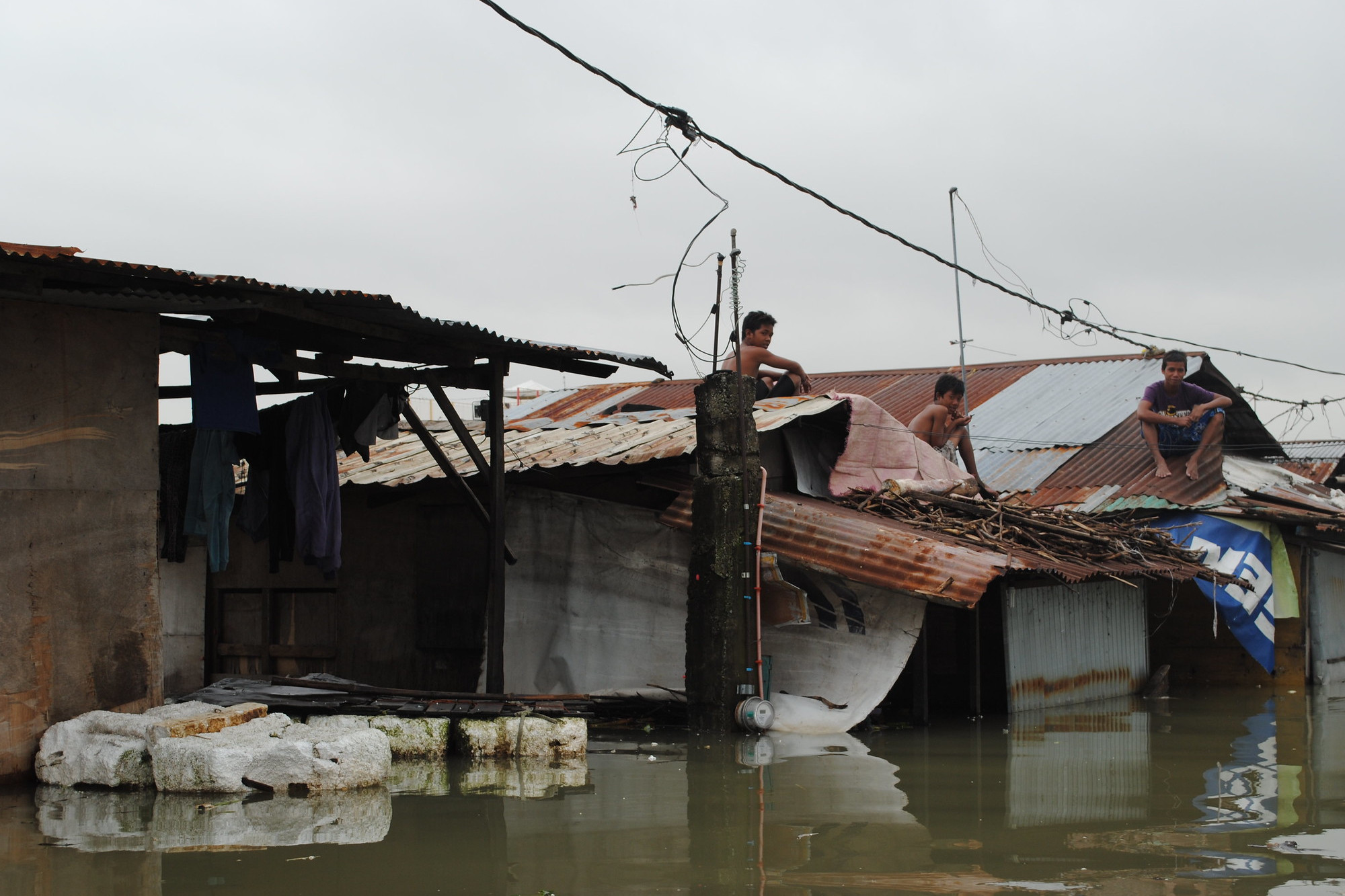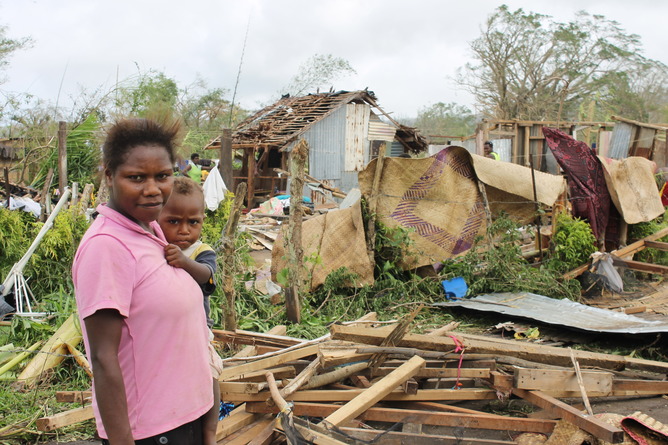When the G7 Ministers of Climate, Energy and the Environment met last month, financial aid for the countries harmed by climate breakdown was still an afterthought. Buried in the 51st paragraph, their communique acknowledged that “action and support for vulnerable countries, populations and vulnerable groups need to be further scaled up” by the G7 – but no promises.
The scale and costs of climate-induced loss and damage is already immense, but little recognised in rich countries. When Cyclone Nargis made landfall in the highly populated Irrawaddy River delta region of Myanmar in May 2008, it sent storm surges some 40 kilometres inland and killed 140,000 people, with 55,000 declared missing. This disastrous event barely made headlines in the European and American press, since Myanmar is governed by an insular military dictatorship, with little or no connection with the outside world.
The estimated storm-related damages caused by Cyclone Nargis were pegged at around $10 billion USD, only to be superseded by Cyclone Amphan in May 2020, which landed in the Indian states of West Bengal and Odisha, and parts of Bangladesh, with wind speeds of up to 220 kilometres per hour, causing an estimated $13.2 billion USD in damages. Some of the most destructive climate-related events have come from heavy rainfall. In late July/early August, 2010, unrelenting torrential monsoon rains in the Indus River basin in Pakistan displaced approximately 20 million people from their homes, with loss and damage estimated at $43 billion, including enormous loss of livestock and agricultural productivity. During the past two decades, a series of similar extreme weather events have repeatedly occurred in many relatively impoverished regions of Asia, Africa and Latin America.
Based on extensive data and published information gathered by the non-profit Germanwatch in their annual climate risk index reports, we were able to assemble cumulative loss and damage estimates of the twenty most vulnerable low- and lower middle-income countries (LI/LMICs).[1] In a 20-year period (1998 – 2017), this total amounted to over half a trillion dollars ($593 billion), with 293,000 deaths from extreme weather events. We consider these weather-related loss and damage estimates conservative, since they do not include any determination of long-term adverse economic impacts from lingering health disorders, severe food insecurity, and other unaccounted costs associated with employment losses, deferred educational opportunities or permanent displacements. An Oxfam report published this week suggested higher figures, although it looked at a different group of countries and projected future costs too.
The question of loss and damage from climate change impacts was fraught with controversy from its inception. Originally raised by a number a small island states in the 1990s, many wealthier countries, including the United States, balked at any mention of loss and damage in global negotiations at the annual Conference of Parties (COP) meetings convened under the aegis of the United Nations Framework Convention on Climate Change. While the concepts of “mitigation” and “adaptation” have well-constructed definitions in international discussions on climate change, the underlying premise of “loss and damage” incurred by poorer countries remains to be clarified to this day.
At the 2013 Conference of Parties meeting held in Warsaw, Poland (COP19), the conferees adopted the Warsaw International Mechanism on Loss and Damage. For the first time, developed countries had acknowledged that consideration of loss and damage was worthy of further deliberations in global negotiations. However, they constrained it to be a discussion point only, an item to strengthen “dialogue”, share “knowledge” and mobilise “expertise”.
At the 2015 COP21 meeting held in Paris, France, the Paris Agreement adopted Article 8, which dealt with loss and damage in explicit terms, stating that the conferees “recognize the importance of averting, minimizing and addressing loss and damage associated with the adverse effects of climate change, including extreme weather events and slow onset events, and the role of sustainable development in reducing the risk of loss and damage.” In the final document, developed country representatives slipped in the following statement in the introductory segment on loss and damage: “. . . that Article 8 of the Agreement does not involve or provide a basis for any liability or compensation.”
It is clear where the North/South divide resides on the question of loss and damage. It deals with liability and compensation that the most climate-impacted, less affluent countries feel is owed to them by industrialised, rich countries in North America and Europe. At the COP26 meeting held last year in Glasgow, Scotland, the loss and damage item was brought up at the final negotiation sessions between the conferees. Once again, this topic was deferred and not fully discussed, whereby the troubling loss and damage “can” was kicked down to the COP27 meeting to be held later this year in Shams El-Sheikh, Egypt.
There is still considerable opaqueness regarding what is exactly meant by loss and damage in international policy making circles. Are we dealing with compensating past and present loss and damage, or does it include setting aside funds and establishing insurance programs for future, anticipated extreme weather and slow-onset events? Then there is the matter of identifying the most responsible parties that caused past and future climate-related events, i.e., which nation states and which private industries? In an earlier article published in this outlet, it was stated that United States, together with European Union countries, were responsible for over half of the total cumulative carbon dioxide emitted into the atmosphere since the 18th century.
Several recent reports have indicated severe impacts on the economies of many poor countries around the globe if greenhouse gas emission trends remained at the present pace. A November 2021 report estimated the climate-related impacts on least developed countries and small island states could potentially cause a GDP reduction of 19.6% by 2050 and 63.9% by 2100, for instance. Representatives at COP27 and future climate-related meetings must therefore consider two critically important items on their coming agenda.
First, establishing an international funding mechanism for compensating past and present loss and damage incurred by climate-impacted countries, such as by seriously considering the proposed Global Climate Reparations Fund or an equivalent financing institution. Secondly, creating a climate adaptation, resilience building, and extreme weather-related insurance program for LI/LMICs, least developed countries and small island states. By instituting these two separate, but well-funded, properly planned and executed multilateral initiatives, we will be able to avoid a great deal of aggravation, global disorder and institutional chaos in the next few decades.
Endnotes
[1] The twenty most vulnerable LI/LMICs alphabetically include: Afghanistan, Bangladesh, Bolivia, Cambodia, El Salvador, Guatemala, Haiti, Honduras, India, Madagascar, Mozambique, Myanmar, Nepal, Oman, Pakistan, Philippines, Sri Lanka, Tajikistan, Vietnam, and Zimbabwe.
Dr. A. Karim Ahmed is an internationally recognised science and policy expert in the field of environmental sciences, natural resource management, technology assessment and public health. Read his biography for the Global Council for Science and Environment, of which he is a director, here.
Jeffrey D. Tamucci is a dual degree candidate at the University of Connecticut, where he is pursuing a PhD in Molecular and Cell Biology and Masters in Public Health. Find his ORCID profile here, or his LinkedIn page here.






